Wellness 2022: Next Steps

Join us on zoom tomorrow!

AquaGym Fitness Wellness Program Happy Hour !!!!
Mar 10, 2022 06:00 PM Eastern Time (US and Canada)
Join Zoom Meeting: https://us02web.zoom.us/j/89818629600
Meeting ID: 898 1862 9600
One tap mobile
- +13017158592,,89818629600# US (Washington DC)
- +13126266799,,89818629600# US (Chicago)
Dial by your location
- +1 301 715 8592 US (Washington DC)
- +1 312 626 6799 US (Chicago)
- +1 646 876 9923 US (New York)
- +1 253 215 8782 US (Tacoma)
- +1 346 248 7799 US (Houston)
- +1 408 638 0968 US (San Jose)
- +1 669 900 6833 US (San Jose)
Meeting ID: 898 1862 9600
Find your local number: https://us02web.zoom.us/u/kecrQAr6b1
Wellness 2022: Thank You
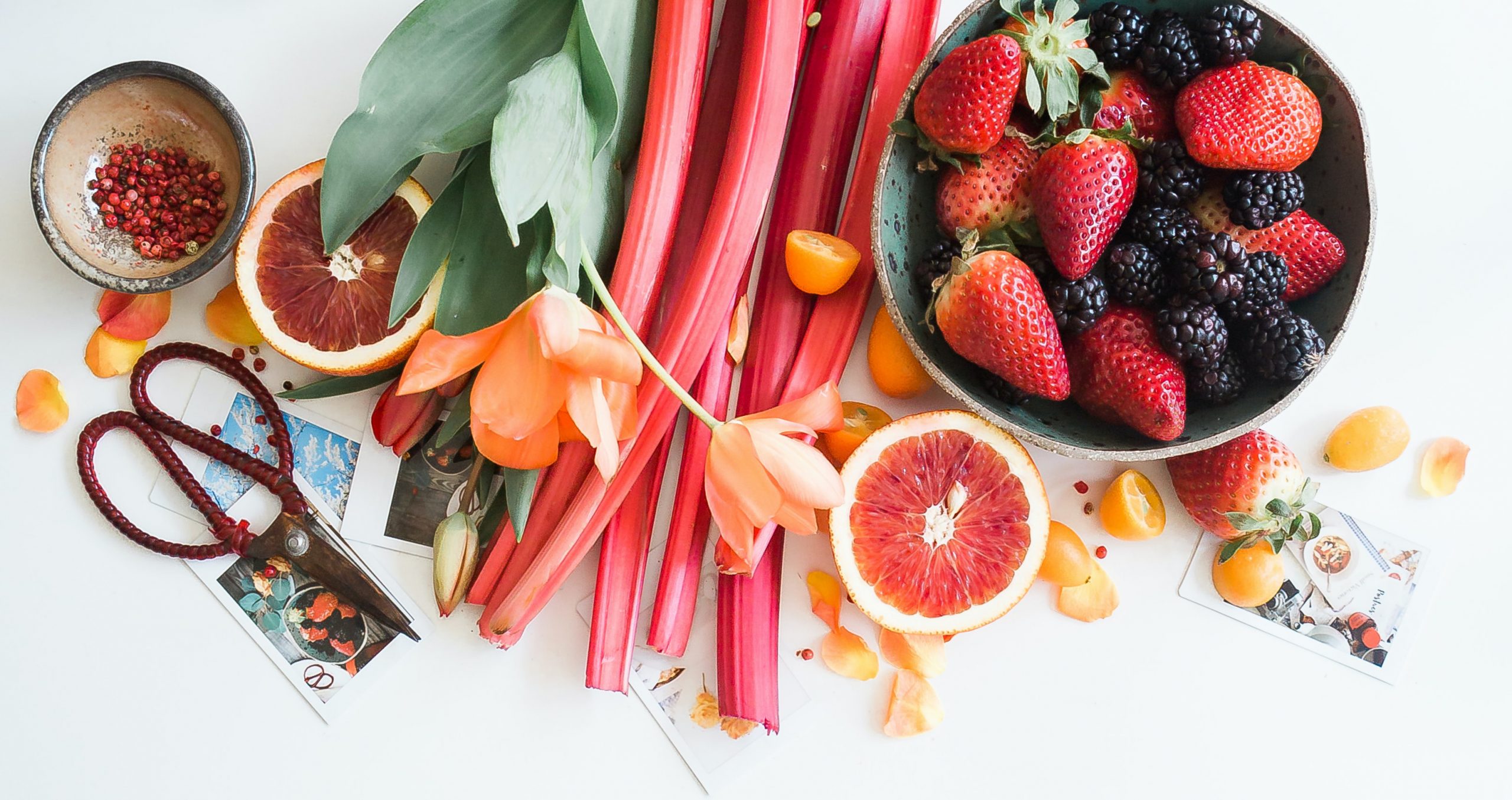
As we wrap up these weeks of wellness…we want to say THANK YOU….to YOU!
YOU took the time to change some of your lifestyles. YOU chose to read the material and be inspired.
YOU took a lead role in your ongoing wellness.
Everyone’s journey is personal. We simply hope that we have started you on a path that you are excited to continue to walk on.
We began working on the concept of ketosis. Why? because it is one of the easiest ways to get people to remove sugars from their life. The fact that Keto allows meats and yummy butter, makes leaving the sugar behind a little more tolerable.
Then we moved into the Bullet Proof Diet because it follows the Keto guidelines with a few “hacks” that can boost your results. During this time you were still detoxing from sugar.
We followed up the Mediterranean style diet… which continues to be low on sugar but encourages more food options and flavors including fish, olives, herbs, and spices.
After several weeks of sugar detox, it was time to really delve into the functions of the body. This is when we began to discuss gut health. I don’t know how many of you tried to include more gut-healthy items into your diet, but I guarantee that those who did are feeling better already!
Many people enjoy a meatless lifestyle- and it can be delicious. We spent the next week sharing and discussing plant-based diets. Even if you consider trying to be plant-based only 2 days a week…it is something! There are a lot of interesting studies out there regarding human performance with a plant-based diet.
Finally…we took you all the way to detox. UGH…Detox! If you did any of it, you know you gained some benefits from it. To be honest, we just wanted to share with you Aruvedia. The ancient way of health that has been on this planet for thousands of years.
Here is the thing…
Our bodies are perfectly functional machines. We are built to eat the foods of this earth and to move. In today’s society, our bodies get “hood-winked” or tricked into fads, new science, as well as the greed of corporations. The difficulties we have along the way have happened TO US – but – we can take our holistic health back.
Our team is passionate about this. We hope that you have begun to find your passion for wellness as you have progressed through the past several weeks.
Now…
JOIN US ON THE ZOOM!
We want you to share!. Be sure and do your journal work…but even if you don’t Please attend!
Be sure and fill out the Facebook poll regarding time.
and also… this is just the beginning.
We hope to continue to help you on your wellness journey! Stay tuned. We have so many exciting things in store!
See you Thursday!!!
Wellness 2022: Wrap Up

Journal Discovery
Today we want you to look over your notes.
Start a new page and write down ONE thing you learned in each weekly segment.
Finally: Begin to think about your “Take-Away” from these weeks, big or small.
Let’s Get Together!!

We want to have a group Zoom “Happy Hour” with YOU!
Please let us know if you can meet us on-screen THIS THURSDAY, March 10th. from 5-6ish EST.
If you can… make an appetizer or snack! Share some of the fun creations that YOU have enjoyed during this Wellness Program.
Stephanie, Eliza, and Crystal are so looking forward to connecting with you.
Keep an eye out for the link to join all the FUN!
Wellness 2022: Detox, Part II, Day 7
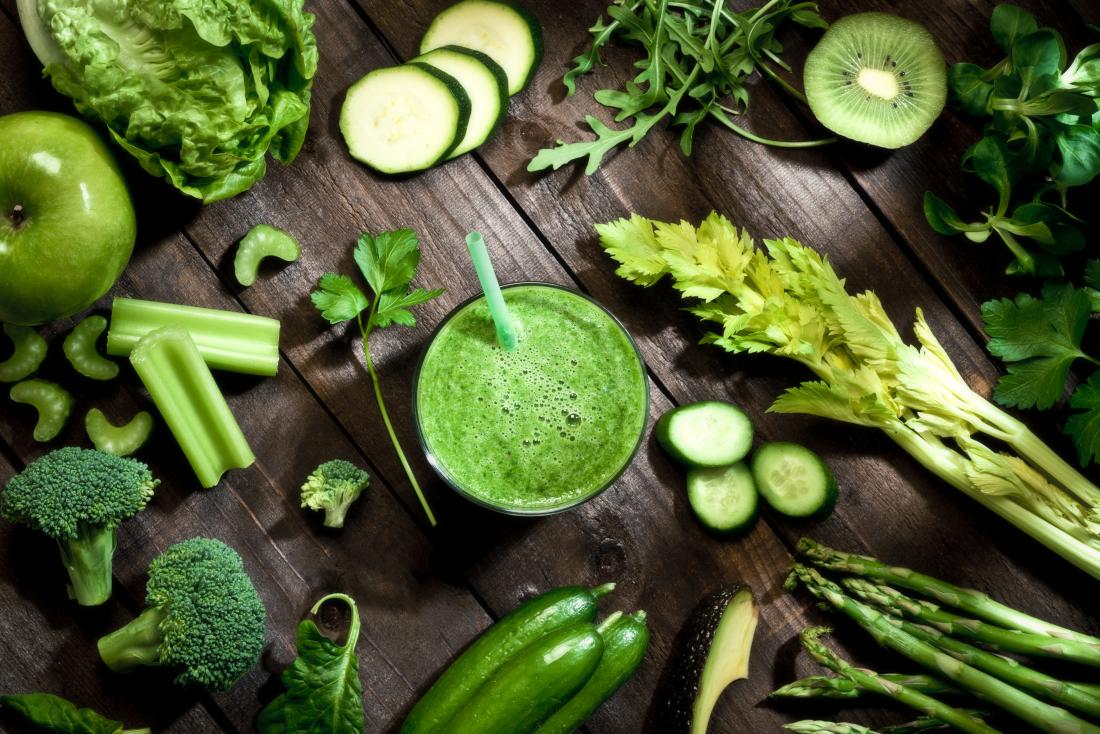
Positive Visualization: Preparing Yourself for Success
Albert Einstein once said: “Imagination is everything. It is the preview of life’s coming attractions.” Yet in a world that is often too focused on tangible results, people tend to forget about the mind’s powerful ability to direct performance.

You may be reaching the end of this program, but your wellness journey continues for the rest of your life. You might be feeling nervous about how to continue on this journey without the structure of this program so I want to share with you something that has been very valuable to me and that is positive visualization.
Positive visualization is a wellness technique that has been used for centuries to master real world situations and achieve goals by using the power of positive thinking. Think of positive visualization as a “mental rehearsal” that we carry out in our minds. It is like a daydream but more focused on the goals that we want to achieve. Positive visualization, much like its name, talks about focusing on the positives in life and that practice supposedly makes even herculean tasks look achievable. For you, the herculean task might be reaching your goal weight or some other health benchmark. Positive visualization can help you stay on track. Here are some ways to do this.

Visualize the whole process…
Positive visualization is a technique that physiologically tunes you into the steps needed to achieve any desired outcome, making it more likely that you will succeed. First you want to identify what your goals are. What it looks like in all aspects. See yourself in the future with your goals met. What does that look like? It might be slipping on that dress that has been too tight, going for a long walk that was previously too difficult, or traveling to see your family where you are easily making healthy choices. Once you have identified the goal(s), then visualizing the process of succeeding towards that end goal. What will the steps be to get there.
Be specific…
The scenarios you imagine should be specific, and should include as many of the senses as possible. Try to create a detailed mental picture as if the process was occuring right now. Engage as many of the five senses as you can. What are you wearing? What is around you? What are you feeling? What do you smell, taste, and hear?
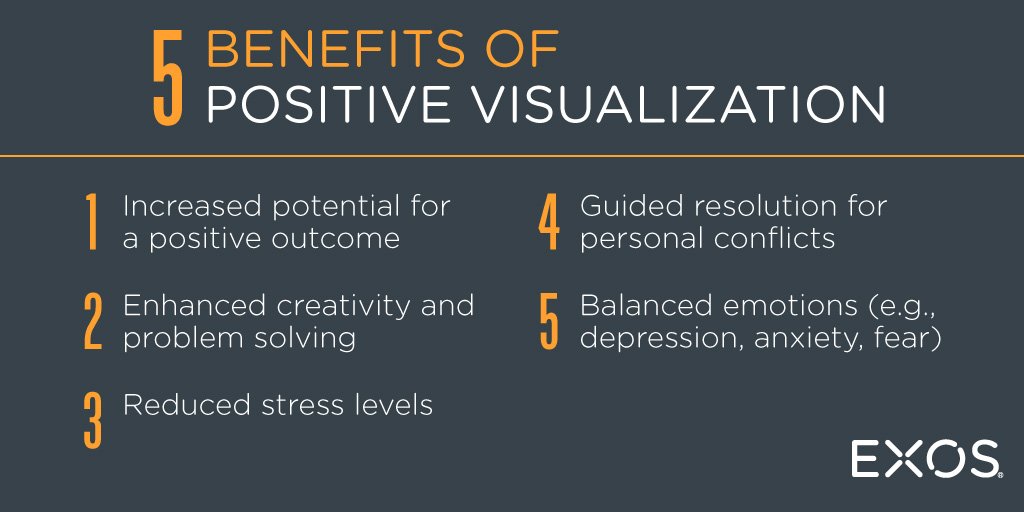
Practice often…
Find a time that you can regularly set aside for visualization. If possible, the same time everyday. An ideal time to practice visualization is in the morning, as soon as you wake up. At this time, the mind is still still slightly lucid, which makes it easier to formulate mental images.
Visualization is a mental skill that requires you to concentrate on creating and controlling your images, which can be tiring when you first get started. Begin by visualizing for short periods of time, and then gradually increasing the time as you become more comfortable.

In Conclusion
By planting the process in our subconscious mind through visualization, we implement a more holistic approach to goal setting. Visualizing ourselves succeeding helps us to feel more confident in ourselves. The more confident we feel, the more likely we are to make the decisions that need to be taken for us to succeed.
Remember that positive visualization is not a shortcut or a substitute for practice, determination, and hard work. However, it strengthens your determination and hence is an essential tool for achieving your desired goals. If you find yourself struggling with self-doubt and lacking motivation, positive visualization will do the trick for you.
Wellness 2022: Detox, Part II, Day 6

60 Ways to Live Longer, Stronger and Better!
Boost Your Brain Health
- Make weekly exercise dates. You can easily talk yourself out of a workout, but it’s more difficult to do when you have a standing commitment to work out with a friend. Overall, aim for 150-plus minutes of weekly moderate-intensity aerobic exercise. Exercisers are 45 percent less likely to develop Alzheimer’s disease, the Alzheimer’s Drug Discovery Foundation reports.
- Eat a daily salad. Just one serving of leafy greens a day was associated with slower cognitive decline, a 2017 study by Rush University Medical Center showed.
- Have a superberry dessert. Dark-colored berries like blueberries and blackberries contain compounds that fight inflammation and help protect your brain. One cup of blueberries consumed daily for six months can also lower your risk of cardiovascular disease by 12 to 15 percent, according to 2019 research in the American Journal of Clinical Nutrition. Try berries and plain yogurt as your go-to after-dinner treat.
- Develop a green tea habit. Especially if your favorite drink is soda. Researchers have found that people who consumed sweetened beverages were more likely to develop Alzheimer’s, while some studies suggest green tea might promote cognitive functions.
- Join a book club. Those who engage their mind most often through intellectual activities such as playing games or reading were 29 percent less likely to develop dementia during a five-year follow-up period, reports a 2018 Hong Kong study of adults 65 and older that was published in JAMA Psychiatry.
- Once a week, try something new. Listen to new music, learn some words in another language or sign up for a lecture. Lifelong learning is associated with improved brain health, and staying mentally active is linked to delayed onset of cognitive decline.
Go to Sleep Easier

- Make your bed each morning. According to a survey by the National Sleep Foundation, those who make their bed nearly every day were more likely to report getting a good night’s sleep.
- Change your bedsheets every Sunday. Allergens can disrupt sleep. To cut down on buildup, wash your sheets weekly. Also replace pillows at least every two years and mattresses every 10, both for hygiene and for comfort (they can break down over time).
- Face your alarm clock toward the wall. And place your cellphone facedown. Artificial light disrupts sleep. Instead of night-lights, keep a flashlight next to your bed to use when needed.
- Turn the fan on when the lights go off. Or invest in a sound machine. Snoring partners, traffic and other ambient noise can cause you to wake during the night and experience more daytime sleepiness and fatigue. A source of white noise, like a fan, can help modulate that problem.
- Enjoy some chamomile tea at bedtime. In a randomized, double-blind study from the University of Michigan, those taking a chamomile extract twice a day zonked out 16 minutes faster, on average.
Pump Up Your Heart Health
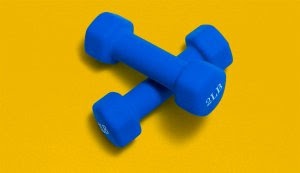
- Brush and floss regularly. Swollen or bleeding gums caused by bad oral health may lead to microorganisms traveling into the bloodstream, which could cause inflammation and heart damage. Older adults who skimped on oral hygiene were 20 to 35 percent more likely to die during a 17-year study done by University of Southern California researchers.
- Try doing 10 minutes of resistance training every morning. That adds up to a truly healthy week of muscle strengthening. In research published in 2017 in the Journal of the American Heart Association, women (average age 62) who did just 20 to 59 minutes of muscle-strengthening exercises each week were 29 percent less likely to die during the 12-year study than those who did none. Low muscle strength is associated with an elevated risk of death in people 50 and older, regardless of general health levels. Even cardio exercise doesn’t appear to protect you if you allow your strength levels to deteriorate.
- Be an avocado sneak. Replace half the butter in your baking recipes with mashed avocado, and sneak this source of healthy monounsaturated fatty acids (MUFAs) into smoothies and spreads whenever you can. Replacing saturated fats with MUFAs can help lower LDL (bad) cholesterol.
- Walk off your cravings. Smoking puts you at a higher risk for heart disease and stroke. When a craving hits, try lacing up your shoes and heading out for a quick walk and breath of fresh air. Who knows? You might just want to keep going!
- Put a banana on it. A diet rich in potassium can help offset some of sodium’s harmful effects on blood pressure. Add bananas to everything from breakfast cereal to nighttime desserts to PB&J sandwiches. While you’re at it, squeeze in more sweet potatoes, tomatoes and oranges.
Shake Off Stress
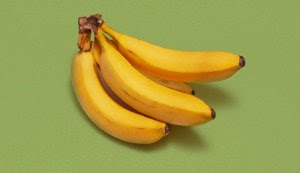
- Organize one thing each day—your handbag, a bedside table, a drawer. You’ll feel one chore is behind you, which is helpful in feeling less pressured in general.
- Take a daily “do not disturb” break. Whether at your desk, in your kitchen or on a deck outside, close your eyes and do not open them for anyone. Even five minutes will feel wonderful!
- Have a go-to ritual that you look forward to when the anxiety is too much. Do something simple like calling a friend, having a cup of tea, playing a song on the piano or sneaking away to read a few pages of a novel.
- Enjoy a daily “play snack.” Remember what you used to enjoy doing as a kid, and go do that. Play with a yo-yo or Rubik’s Cube. Go outside and skip rope or swing a golf club. Doodle, build a tower with toy building blocks, fold origami, draw with colored markers. Inject fun in five- to 10-minute chunks during your day as a way to let your brain relax.
Clean Up Your Diet
- Bribe yourself into eating vegetables. Find a salad dressing or dip you love; you’ll be more inclined to eat veggies dipped in it.
- Store fruit at front of the fridge. When you bring fruit home, immediately wash and put in a bowl at the front of the top shelf rather than in a drawer. The minute you open the fridge, it will prompt you to eat some.
- Portion out nuts. In a study that appeared in BMC Medicine in 2013 of adults ages 55 to 80 at high cardiovascular risk, those who ate more than three servings of nuts per week were 39 percent less likely to die of any cause over the next five years of the study. The problem is that people often overindulge and eat them straight out of a large bag or can. Prepack them into individual serving sizes in zip-close bags so you have just one serving, not five.
- Decorate healthfully. If chocolates are on the table, you’ll eat them. Hide the less-healthy snacks and put fruit and nuts on the table within reach.
- Snack before you shop. Going to the grocery store on an empty stomach — even if it’s a digital store — can lead to unhealthy impulse buys. Have a bite to eat, and while you’re eating, write out a shopping list and stick to it.
- Drink your fiber. Throw some fruit into the blender right before it goes bad. Try blending a banana, an orange and spinach; throw in some walnuts for even more fiber and omega-3 fatty acids.
Get Back In Shape
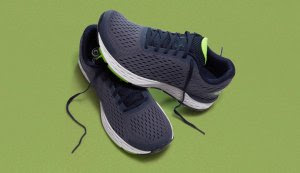
- “Commute” even if you work from home. For many of us, COVID means no commuting to and from the office — which means no moving, either. Use that gift of time for a walk, bike ride or jog. In a study, older women who averaged 4,400 steps per day (compared with just 2,700 steps) were 41 percent less likely to die during a follow-up of 4.3 years.
- Set a “stretch timer.” Use the timer to prompt you to stand up and get your blood flowing and muscles moving once every hour. Your brain needs oxygen to be productive — so if that’s how you can persuade yourself to get up and move, then do so!
- Take your phone calls standing or walking. They’re called “mobile phones” for a reason. Each time yours rings, stand up or go for a walk. It’s an easy way to decrease the amount of time you are sedentary.
Set Boundaries With Technology
- Turn off all phone notifications. Americans are already checking their phones an average of 96 times a day, according to research from 2019, so you’re not going to miss anything.
- Establish no-phone zones, starting with no phones at dinner and in the bedroom. One review of 290 studies by a Swedish university researcher that was published in 2018 found an association between frequent mobile phone use and depressive symptoms and sleep problems.
- When you wake up, don’t reach for your phone. Do something you love instead: Journal, stretch, make coffee or read one book chapter. Get an alarm clock so you won’t need to rely on your phone to wake up.
- Go screen-free one day a week. “My family and I have turned off all screens for one full day each week for 11 years, and we spend the day doing things we love. It’s our favorite day of the week,” says author Tiffany Shlain.
Improve Your Relationships
- Do the dishwasher boogie. Pick a chore you both hate, and turn it into a nightly dance party. Dancing together in the kitchen or anywhere in your house will remind you of how much fun you both are.
- Make eye contact over dinner. Hold each other’s gaze for 60 seconds. It will help you find the grace, beauty or soul in each other’s eyes!
- Give Friday night thanks. Share three things you’re grateful for every Friday night over dinner (or any other night of the week). This is a terrific habit that will give you a new perspective on your family members.
Conquer Loneliness
- Keep your list of loved ones close. Write three to five names on a Post-it note and stick it on your fridge or near the computer, or post their photos. Typically, we’re happier if we feel deeply connected to a few relationships we want to prioritize rather than trying to stay in touch with everyone.
- And make short, regular check-ins to loved ones. A study showed that even a few 10-minute phone calls each week can reduce loneliness by 20 percent.
- Call one long-lost friend every week. We often talk ourselves out of reaching out, thinking we’d be interrupting them or they won’t welcome hearing from us. But being the one who initiates contact can be a great gift — and another way to cure loneliness. In a study published in 2020 in the journal Heart, male and female cardiac patients who reported feeling lonely were two and three times more likely to die, respectively, a year after their hospital discharge.
- Give little gifts. A handwritten card, flowers, an act of service or a texted photo are examples of how we can bring joy to both ourselves and those who may be lonely or anxious.
Become More Resilient
- Spend 20 minutes among the trees. That’s exactly how much time you need in nature to reduce your level of stress hormones significantly, according to a 2019 study. Additional time reduces it more, but not dramatically, researchers found.
- Ask what you can do to help. Make a habit of asking others if you can be of service. The more connected you are with your community, the more support you will receive during difficult times.
- Keep a “no regrets checklist.” Write down a list of all the things you’ve had to put off over the years because of work or raising a family. Then make a timeline for how you’ll revisit these goals. Regret is largely avoidable with a little reflection and mindful focus.
- Journal a little each day. Keeping a daily gratitude journal in which you can count your blessings will help you keep perspective when hard times hit. At the end of each day, write down three or four things you feel proud of, positive traits you learned about yourself or positive actions you took toward nurturing yourself that day.
Take Care of Your Skin
- Apply SPF 30 sunscreen every day. Even on rainy winter days. Don’t forget areas such as your ears, the tops of your feet and the back of your neck. Once you begin a skin protection routine, it allows your skin to start repairing itself.
- Use a sunblocking lip balm every day. Lipstick protects women against skin cancer of the lip, which is why it’s seen far more commonly in men. If you don’t wear lipstick, use an SPF lip balm.
- Be a morning (or evening) person. The risk of skin damage is highest between 10 a.m. and 4 p.m. Scheduling your outdoor time at 9 a.m. or 5 p.m. instead of noon can significantly lessen skin damage over time.
- Take time to appreciate your partner’s skin. And while doing so, look out for changes in his or her moles. People often notice skin cancer because of a spot that doesn’t look quite right. Be familiar with your own moles and get a screening if you notice suspicious changes in shape, texture, color or size.
Cut Back On Your Vices
- Put your TV in a time-out. Be mindful of exactly what content you consume -— and choose a specific show or film to watch. When it’s over, turn the TV off and go for a walk or take a bath to give your mind a break. With the end of the pandemic should come the end of long TV binges.
- Make online shopping less impulse-driven. Delete your credit card information from websites on which you regularly shop. Having to grab your wallet to pay for an impulse purchase adds an extra step that gives you more time to consider whether the item is actually necessary.
Clean Up Your Environment
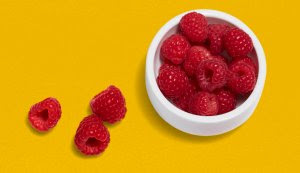
- Store leftovers in glass containers instead of plastic. Plastics often contain harmful chemicals like BPA and phthalates that can seep into food and may negatively impact your health.
- Opt for fragrance-free products. If your household cleaner or air freshener says “fragrance,” you might want to toss it. If the ingredients are not disclosed, the product likely contains harmful chemicals that are carcinogenic. Also, to improve the overall health of your air, invest in a HEPA filter.
- Bring plants into your home. Plants not only look beautiful, but many of them, such as bamboo palm and English ivy, can improve air quality.
- Choose organic fruits and vegetables when possible. By opting for organic produce, you’re reducing your exposure to pesticides. Organic foods may also be more nutritious than their conventional counterparts.
Get Your Gut in Shape
- Try natural constipation treatments. OTC laxatives can interfere with how you absorb nutrients, an issue of rising importance as you age. Look for ways to add more fiber to your diet, as well as foods that are natural laxatives: Kiwi, prunes and rhubarb are all good options.
- Lay off the artificially sweetened gum. For some, foods sweetened with sucralose or fructose, like sugar-free mints or candies, will cause problems with abdominal pain and cramping, bloating, gas or diarrhea.
- Do some diaphragmatic breathing. Stress or anxiety can amplify problems in your GI tract. Work on taking deep breaths that expand your abdomen. This activates the autonomic nervous system and makes your GI tract less sensitive to various stimuli.
- Place a step stool in front of the commode. The idea is to get your knees above your hips so that you’re in more of a squatting position. This straightens out the lower part of your colon so you can pass stools more easily.
Stay Flexible and Improve Your Posture
- Do an hourly posture check. Sit or stand up tall with your feet flat on the floor. Look straight ahead, bring your shoulders back and down, and slightly tuck in your chin. Hold this position for a count of five. Repeat this several times throughout the day. Doing so will get you used to maintaining a healthier, upright posture.
- Change how you carry stuff. The goal is to balance the weight evenly to both sides of your body. When carrying bags in your hands, it’s best to have a similar amount of weight on both sides; this will allow you to maintain an upright posture. If you’re using a backpack, put on both arm straps to spread the burden equally. You should avoid slinging a heavy bag over just one shoulder. If you are leaning over to the side or bent forward, you are carrying too much of a load.
Wellness 2022: Detox, Part II, Day 5

Ayurveda: A Brief Introduction And Guide
by Vasant Lad, BAM&S, MASc

Ayurveda is considered by many scholars to be the oldest healing science. In Sanskrit, Ayurveda means “The Science of Life.” Ayurvedic knowledge originated in India more than 5,000 years ago and is often called the “Mother of All Healing.” It stems from the ancient Vedic culture and was taught for many thousands of years in an oral tradition from accomplished masters to their disciples. Some of this knowledge was set to print a few thousand years ago, but much of it is inaccessible. The principles of many of the natural healing systems now familiar in the West have their roots in Ayurveda, including Homeopathy and Polarity Therapy.
The Strategy — Your Constitution and Its Inner Balance
Ayurveda places great emphasis on prevention and encourages the maintenance of health through close attention to balance in one’s life, right thinking, diet, lifestyle and the use of herbs. Knowledge of Ayurveda enables one to understand how to create this balance of body, mind and consciousness according to one’s own individual constitution and how to make lifestyle changes to bring about and maintain this balance.
Just as everyone has a unique fingerprint, each person has a particular pattern of energy—an individual combination of physical, mental and emotional characteristics—which comprises their own constitution. This constitution is determined at conception by a number of factors and remains the same throughout one’s life.
Many factors, both internal and external, act upon us to disturb this balance and are reflected as a change in one’s constitution from the balanced state. Examples of these emotional and physical stresses include one’s emotional state, diet and food choices, seasons and weather, physical trauma, work and family relationships. Once these factors are understood, one can take appropriate actions to nullify or minimize their effects or eliminate the causes of imbalance and re-establish one’s original constitution. Balance is the natural order; imbalance is disorder. Health is order; disease is disorder. Within the body there is a constant interaction between order and disorder. When one understands the nature and structure of disorder, one can re-establish order.
Balancing the Three Principle Energies of the Body
Ayurveda identifies three basic types of energy or functional principles that are present in everyone and everything. Since there are no single words in English that convey these concepts, we use the original Sanskrit words vata, pitta and kapha. These principles can be related to the basic biology of the body.
Energy is required to create movement so that fluids and nutrients get to the cells, enabling the body to function. Energy is also required to metabolize the nutrients in the cells, and is called for to lubricate and maintain the structure of the cell. Vata is the energy of movement; pitta is the energy of digestion or metabolism and kapha, the energy of lubrication and structure. All people have the qualities of vata, pitta and kapha, but one is usually primary, one secondary and the third is usually least prominent. The cause of disease in Ayurveda is viewed as a lack of proper cellular function due to an excess or deficiency of vata, pitta or kapha. Disease can also be caused by the presence of toxins.
In Ayurveda, body, mind and consciousness work together in maintaining balance. They are simply viewed as different facets of one’s being. To learn how to balance the body, mind and consciousness requires an understanding of how vata, pitta and kapha work together. According to Ayurvedic philosophy the entire cosmos is an interplay of the energies of the five great elements—Space, Air, Fire, Water and Earth. Vata, pitta and kapha are combinations and permutations of these five elements that manifest as patterns present in all creation. In the physical body, vata is the subtle energy of movement, pitta the energy of digestion and metabolism, and kapha the energy that forms the body’s structure.
Vata is the subtle energy associated with movement — composed of Space and Air. It governs breathing, blinking, muscle and tissue movement, pulsation of the heart, and all movements in the cytoplasm and cell membranes. In balance, vata promotes creativity and flexibility. Out of balance, vata produces fear and anxiety.
Pitta expresses as the body’s metabolic system — made up of Fire and Water. It governs digestion, absorption, assimilation, nutrition, metabolism and body temperature. In balance, pitta promotes understanding and intelligence. Out of balance, pitta arouses anger, hatred and jealousy.
Kapha is the energy that forms the body’s structure — bones, muscles, tendons — and provides the “glue” that holds the cells together, formed from Earth and Water. Kapha supplies the water for all bodily parts and systems. It lubricates joints, moisturizes the skin, and maintains immunity. In balance, kapha is expressed as love, calmness and forgiveness. Out of balance, it leads to attachment, greed and envy.
Life presents us with many challenges and opportunities. Although there is much over which we have little control, we do have the power to decide about some things, such as diet and lifestyle. To maintain balance and health, it is important to pay attention to these decisions. Diet and lifestyle appropriate to one’s individual constitution strengthen the body, mind and consciousness.
Ayurveda as a Complementary System of Healing
The basic difference between Ayurveda and Western allopathic medicine is important to understand. Western allopathic medicine currently tends to focus on symptomatology and disease, and primarily uses drugs and surgery to rid the body of pathogens or diseased tissue. Many lives have been saved by this approach. In fact, surgery is encompassed by Ayurveda. However, drugs, because of their toxicity, often weaken the body. Ayurveda does not focus on disease. Rather, Ayurveda maintains that all life must be supported by energy in balance. When there is minimal stress and the flow of energy within a person is balanced, the body’s natural defense systems will be strong and can more easily defend against disease.
It must be emphasized that Ayurveda is not a substitute for Western allopathic medicine. There are many instances when the disease process and acute conditions can best be treated with drugs or surgery. Ayurveda can be used in conjunction with Western medicine to make a person stronger and less likely to be afflicted with disease and/or to rebuild the body after being treated with drugs or surgery.
We all have times when we don’t feel well and recognize that we’re out of balance. Sometimes we go to the doctor only to be told there is nothing wrong. What is actually occurring is that this imbalance has not yet become recognizable as a disease. Yet it is serious enough to make us notice our discomfort. We may start to wonder whether it is just our imagination. We may also begin to consider alternative measures and actively seek to create balance in our body, mind and consciousness.
Evaluation and Treatment of Imbalances
Ayurveda encompasses various techniques for assessing health. The practitioner carefully evaluates key signs and symptoms of illness, especially in relation to the origin and cause of an imbalance. They also consider the patient’s suitability for various treatments. The practitioner arrives at diagnosis through direct questioning, observation and a physical exam, as well as inference. Basic techniques such taking the pulse, observing the tongue, eyes and physical form; and listening to the tone of the voice are employed during an assessment.
Palliative and cleansing measures, when appropriate, can be used to help eliminate an imbalance along with suggestions for eliminating or managing the causes of the imbalance. Recommendations may include the implementation of lifestyle changes; starting and maintaining a suggested diet; and the use of herbs. In some cases, participating in a cleansing program, called panchakarma, is suggested to help the body rid itself of accumulated toxins to gain more benefit from the various suggested measures of treatment.
In summary, Ayurveda addresses all aspects of life — the body, mind and spirit. It recognizes that each of us is unique, each responds differently to the many aspects of life, each possesses different strengths and weaknesses. Through insight, understanding and experience Ayurveda presents a vast wealth of information on the relationships between causes and their effects, both immediate and subtle, for each unique individual.
Vata — The Energy of Movement

Vata provides the essential motion for all bodily processes and is extremely vital for health. On an annual basis, vāta is most prominent in the fall and at the change of seasons, and these are the most important times to be careful of diet and lifestyle. One purpose of lifestyle considerations is stabilize this motion. Routine is very useful in assisting the vata individual to effectively ground all this moving energy.
A person with vata predominant is blessed with a quick mind, flexibility and creativity. Mentally, they usually grasp concepts quickly but then forget them just as quickly. Alert, restless and very active, vata people walk, talk and think fast, but are easily fatigued. They tend to have less willpower, confidence, boldness and tolerance for fluctuation than other types and often feel unstable and ungrounded. When unbalanced, vata types may become fearful, nervous and anxious. In the external world, vata types tend to earn money quickly and spend it quickly. They are not good planners and as a consequence may suffer economic hardship.
Vata types have variable appetite and digestion. They are often attracted to astringent foods like salad and raw vegetables, but their constitution is balanced by warm, cooked foods and sweet, sour and salty tastes. With a tendency to produce little urine, their feces are often hard, dry and small in size and quantity.
Vata resides in the colon, as well as the brain, ears, bones, joints, skin and thighs. Vata people are more susceptible to diseases involving the air principle, such as emphysema, pneumonia and arthritis. Other common vata disorders include flatulence, tics, twitches, aching joints, dry skin and hair, nerve disorders, constipation, and mental confusion. Vata in the body tends to increase with age as is exhibited by the drying and wrinkling of the skin.
Since the attributes of vata are dry, light, cold, rough, subtle, mobile and clear, any of these qualities in excess can cause imbalance. Frequent travel, especially by plane, loud noises, continual stimulation, drugs, sugar and alcohol all derange vata, as does exposure to cold and cold liquids and foods. Like the wind, vata types have a hard time becoming and staying grounded. Routine is difficult but essential if vata is to be lowered and controlled. It is best for vata types to go to bed by 10 PM as they need more rest than the other types. In general, people with excessive vata respond most rapidly to warm, moist, slightly oily, heavy foods. Steam baths, humidifiers and moisture in general are helpful. Daily oil massage before bath or shower is also recommended.
Dietary Considerations
General food guidelines for decreasing vata include warm, well-cooked, unctuous foods. One should have small meals three or four times a day and may snack as needed while maintaining a two hour gap between each meal. Regularity in meal times is important for vata. Those with vata-dominant constitutions do well with one- pot meals such as soups, stews and casseroles. They can use more oil in cooking their foods than the other two doshas and experience better digestion if they limit their intake of raw foods.
Well-cooked oats and rice are good for vata because they are not too drying when cooked with plenty of water and butter or ghee. While cooked vegetables are best for vata, the occasional salad with a good oily or creamy dressing is all right. Nightshades—tomatoes, potatoes, eggplants and peppers—as well as spinach should be avoided if the vata person has stiff, aching joints or muscles. Sweet, ripe and juicy fruits are good for vata. The astringent and drying fruits, such as cranberries, pomegranates and raw apples, should be avoided. Fruit should always be eaten by itself on an empty stomach.
Many vata people can satisfy their need for protein by judicious use of dairy products, but can also use eggs, chicken, turkey, fresh fish and venison if they wish. Legumes are difficult to digest and should be consumed in limited quantity by those trying to pacify vata. The legumes should be the split type and soaked before cooking. Cooking them with a little oil and spices, such as turmeric, cumin, coriander, ginger, garlic and hing (asafoetida), will help prevent vata from being disturbed.
All nuts and seeds are good for vata, but are best used as butters or milks. Ten almonds, soaked in water overnight with skins removed the next morning, are a satisfying early morning food. Sesame oil is warming for vata, but all oils are good. All dairy products are good for vata with hard cheese being eaten sparingly. All spices are good, but should not be overused. Vatas can have half a glass of wine, diluted with water, during or after a meal. Since vata people tend to be prone to addiction, they should avoid sugar, caffeine and tobacco. Intensity itself can be intoxicating to vata, so one should seek relaxation and meditation to reduce vata.
General guidelines for balancing vata:
- Keep warm
- Keep calm
- Avoid cold, frozen or raw foods
- Avoid extreme cold
- Eat warm foods and spices
- Keep a regular routine
- Get plenty of rest
Pitta — The Energy of Digestion and Metabolism
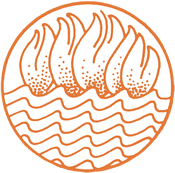
Pitta types have many of the qualities of fire. Fire is hot, penetrating, sharp and agitating. Similarly, pitta people have warm bodies, penetrating ideas and sharp intelligence. When out of balance, they can become very agitated and short-tempered. The pitta body type is one of medium height and build, with ruddy or coppery skin. They may have many moles and freckles. Their skin is warm and less wrinkled than vata skin. Their hair tends to be silky and they often experience premature graying or hair loss. Their eyes are of medium size and the conjunctiva is moist. The nose is sharp and the tip tends to be reddish.
Those with pitta-dominant constitutions have a strong metabolism, good digestion and strong appetites. They like plenty of food and liquids and tend to love hot spices and cold drinks. However, their constitution is balanced by sweet, bitter and astringent tastes. Pitta people’s sleep is sound and of medium duration. They produce large quantities of urine and feces, which tend to be yellowish, soft and plentiful. They perspire easily and their hands and feet stay warm. Pitta people have a lower tolerance for sunlight, heat and hard physical work.
Mentally, pitta types are alert and intelligent and have good powers of comprehension. However, they are easily agitated and aggressive and tend toward hate, anger and jealousy when imbalanced. In the external world, pitta people like to be leaders and planners and seek material prosperity. They like to exhibit their wealth and possessions. Pitta people tend to have diseases involving the fire principle such as fevers, inflammatory diseases and jaundice. Common symptoms include skin rashes, burning sensation, ulceration, fever, inflammations or irritations such as conjunctivitis, colitis or sore throats.
Since the attributes of pitta are oily, hot, light, mobile, dispersing and liquid, an excess of any of these qualities aggravates pitta. Summer is a time of heat, the pitta season. Sunburn, poison ivy, prickly heat and short tempers are common. These kinds of pitta disorders tend to calm down as the weather gets cooler. The diet and lifestyle changes emphasize coolness—cool foods, avoidance of chilies and spices (especially difficult for New Mexicans), and cool climates. People with excessive pitta need to exercise at the coolest part of the day.
Dietary Considerations
General food guidelines for pacifying pitta include avoiding sour, salty and pungent foods. Vegetarianism is best for pitta people and they should refrain from eating meat, eggs, alcohol and salt. To help calm their natural aggressiveness and compulsiveness, it is beneficial to incorporate sweet, cooling and bitter foods and tastes into their diets.
Barley, rice, oats and wheat are good grains for pitta dominant individuals and vegetables should form a substantial part of their diet. Tomatoes, radishes, chilies, garlic and raw onions should all be avoided. In fact, any vegetable that is too sour or hot will aggravate pitta, but most other vegetables will help to calm it. Daikon radishes are cleansing for the liver when pitta is in balance but should be avoided otherwise. Salads and raw vegetables are good for pitta types in the spring and summer as are any sweet fruits. Sour fruits should be avoided with the exception of limes, used sparingly.
Animal foods, especially seafood and eggs, should only be taken in moderation by pitta types. Chicken, turkey, rabbit and venison are all right. All legumes except red and yellow lentils are good in small amounts, with black lentils, chickpeas and mung beans being the best.
Most nuts and seeds have too much oil and are heating for pitta. However, coconut is cooling and sunflower and pumpkin seeds are all right occasionally. Small amounts of coconut, olive and sunflower oils are also good for pitta. Sweet dairy products are good and include milk, unsalted butter, ghee and soft, unsalted cheeses. Yogurt can be used if it is blended with spices, a little sweetener and water. In fact, pitta people can use a sweetener better than the other two doshas because it relieves pitta. However, they should avoid hot spices, using cardamom, cinnamon, coriander, fennel and turmeric predominantly, with small amounts of cumin and black pepper.
Coffee, alcohol and tobacco should be completely avoided although the occasional beer may be relaxing for a pitta person. Black tea may also be used occasionally with a little milk and a pinch of cardamom.
General guidelines for balancing pitta:
- Avoid excessive heat
- Avoid excessive oil
- Avoid excessive steam
- Limit salt intake
- Eat cooling, non-spicy foods
- Exercise during the cooler part of the day
Kapha — The Energy of Lubrication

Kapha types are blessed with strength, endurance and stamina. In balance, they tend to have sweet, loving dispositions and be stable and grounded. Their skin is oily and smooth. Physically, kapha people may gain weight easily and have a slow metabolism. They tend to shun exercise. They have thick skin and their bodies and muscles are well developed. Their eyes are large and attractive with thick, long lashes and brows. Kapha people evacuate slowly and feces tend to be soft, pale and oily. Perspiration is moderate. Sleep is deep and prolonged. Kapha types are attracted to sweet, salty and oily foods, but their constitutions are most balanced by bitter, astringent and pungent tastes.
Psychologically, kapha people tend to be calm, tolerant and forgiving. However, they may become lethargic. While they may be slow to comprehend, their long term memory is excellent. When out of balance, kaphas tend to experience greed, envy, attachment and possessiveness. In the external world, kapha tendencies toward groundedness, stability and attachment help them to earn and hold onto money.
They are more likely to have diseases connected to the water principle such as flu, sinus congestion, and other diseases involving mucous. Sluggishness, excess weight, diabetes, water retention, and headaches are also common. Kapha can become more aggravated as the moon gets full because there is a tendency for water retention at that time. Winter is the time of greatest kapha accumulation and following the kapha-balancing dietary and lifestyle changes are most important during that season.
Dietary Considerations
Dietary guidelines for kapha people stress bitter, astringent and pungent tastes. They actually need foods that will invigorate their minds while limiting their overall consumption of food. They should avoid dairy products and fats of any kind, especially fried or greasy foods.
Those with kapha dominant constitutions need less grain than pitta or vata constitutions with buckwheat and millet (more heating) being optimal grains for them followed by barley, rice and corn. Roasted or dry cooked grains are best. All vegetables are good for kapha but one should emphasize leafy greens and vegetables grown above ground more than root vegetables while avoiding very sweet, sour or juicy vegetables. Generally kapha people can eat raw vegetables although steamed or stir-fried are easier to digest. Very sweet or sour fruits should be avoided with the more astringent and drying fruits being preferable such as apples, apricots, cranberries, mangoes, peaches and pears.
Only rarely do kapha people need animal foods and, when they do, it should be dry cooked—baked, roasted, broiled—never fried. They could eat chicken, eggs, rabbit, seafood and venison. As their bodies do not require large amounts of protein, they also should not overeat legumes although these are better for them than meat because of the lack of fat. Black beans, mung beans, pinto beans and red lentils are best for kapha types.
The heavy qualities of nuts and seeds aggravate kapha as does the oil in them. Occasional sunflower and pumpkin seeds are all right. Almond, corn, safflower or sunflower oils can be used in small amounts as well. The same holds true for dairy products: in general, kapha people should avoid the heavy, cooling, sweet qualities of dairy. A little ghee for cooking and some consumption of goat’s milk is good for kapha types.
Since kapha people should avoid sweets, the only sweetener they should use is raw honey, which is heating. However, they can use all spices, except salt, with ginger and garlic being best for them. A person whose dominant dosha is kapha and who has very little influence from the other two doshas can benefit from the occasional use of stimulants such as coffee and tea. They are also not as harmed by tobacco and hard liquor. However, they really do not need alcohol at all. If they elect to use alcohol, wine is their best choice.
General guidelines for balancing kapha:
- Get plenty of exercise
- Avoid heavy foods
- Keep active
- Avoid dairy
- Avoid iced food or drinks
- Vary your routine
- Avoid fatty, oily foods
- Eat light, dry food
- No daytime naps
Remember that your progress toward balance and health is proportional to how well you stick to the guidelines of diet and lifestyle. Old habits sometimes die hard and your changes may be very gradual but, to achieve progress, the changes need to be made. You are in charge of your own rate of change.
Wellness 2022: Detox, Part II, Day 4

There are lots of different recipes that are called “detox” foods.
There are many other resources to add variety to your detox.
Right now we are trying to stay plant-based…but you don’t HAVE to.
Check out these great recipes.

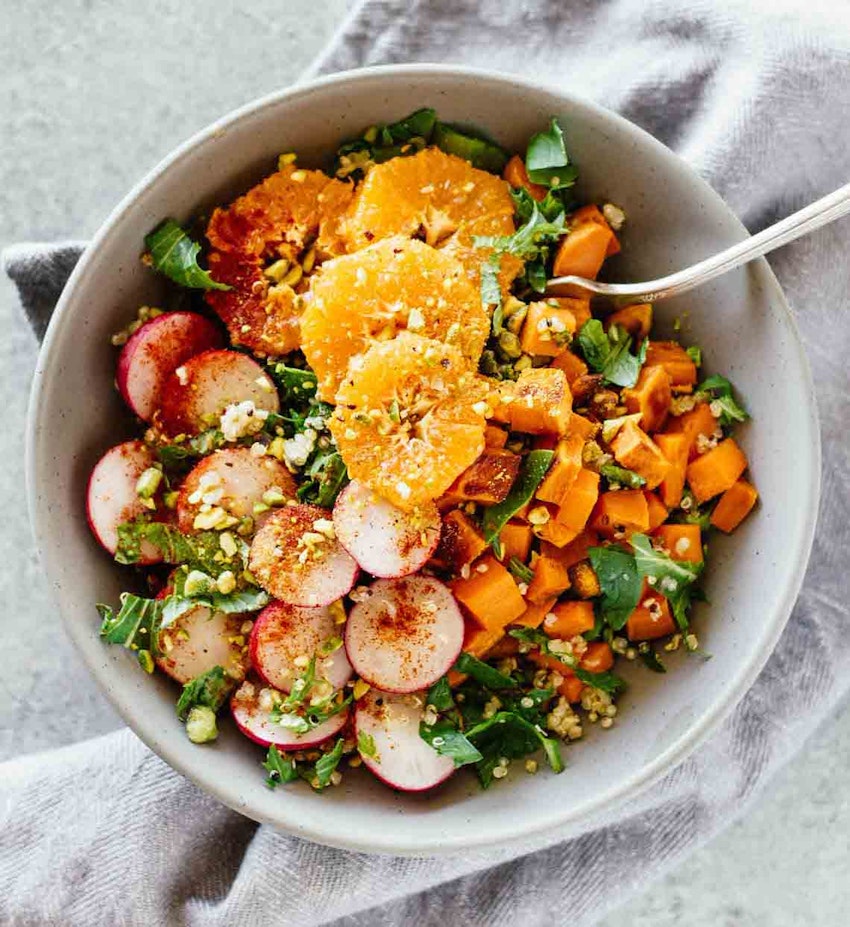


Wellness 2022: Detox, Part II, Day 3

Fitness Focus – Barre Workout
Today’s workout is going to focus on stretching and full body sculpting.
Some of the benefits of Barre workouts are:
1. IMPROVES POSTURE
“There’s a big focus on strengthening the muscles through the chest and shoulders in barre practice, which in turn prevents us from slouching,” Willoughby says. After just a few sessions, you’ll feel yourself standing taller with a sense of elongation throughout your body.
2. STRENGTHENS GLUTES
Sure, this extra toning is a win for us in the peachy rear department, but Willoughby explains that there’s more to it than a tightened bum. “More importantly, working on your glutes helps to strengthen all the muscles that stabilize the pelvis. This helps to alleviate pressure on the back, hips, and knees,” she says.
3. TONES STOMACH MUSCLES
Because barre focuses heavily on balance and strength, your core is an integral part of the training. “As you use the abdominals to hold the body in a correct alignment, barre classes will give you a heavy core workout—perfect for keeping toned tummies in check,” says Willoughby. This can be especially helpful for postpartum mothers looking to bounce back.
4. INCREASES FLEXIBILITY
The combination of stretching and the focus on posture allows your flexibility to be pushed to the limit. This means fewer potential injuries and improved physical performance. By no means do you need to be the most graceful, swan-like prima ballerina at the barre (the movements are easy to adapt for all levels). Give yourself a few weeks and you’ll be surprised at how your flexibility increases.
5. REDUCES STRESS
We all know that exercise, in general, helps to reduce stress,2 but whereas yoga quiets the mind and HIIT gets it all out, barre sits somewhere in between. Barre is a mental challenge, as each movement requires a level of mindfulness to stay engaged. It’s almost like a form of meditation, as your brain remains intensely focused on each small movement. You’ll leave each class feeling lifted and calm.
6. BETTER MENTAL FOCUS
You might find yourself being quick on your feet when it comes to thinking and problem solving after your barre session. Like stress, an exercise in general releases endorphins that keep your mind sharp. Research has shown the combination of Pilates and yoga specifically (which is ultimately what barre is) may improve mental clarity and keep you thinking positively.3
7. INCREASES OVERALL STRENGTH
Not feeling like lifting heavy weights, but want to improve your strength? No problem. With barre, you’re often using only small hand weights (or none at all), resistance bands, and stability balls. You also don’t have to worry about what day of the week leg day lands on. Barre exercises are full-body workouts, strengthening your arms, legs, and core all in one session.
8. IMPROVES ENDURANCE
Endurance is more than improving your stamina for future workouts; it also impacts essential organs. The American Heart Association states that your heart, lungs, and circulatory system stay healthy when endurance activity, like barre, is incorporated into your routine. When you stay consistent with these exercises, you can reduce the risk of developing diseases like heart disease, stroke, and diabetes.
Wellness 2022: Detox, Part II, Day 2

Take a look at the importance of a healthy lifestyle and the endocrine system!
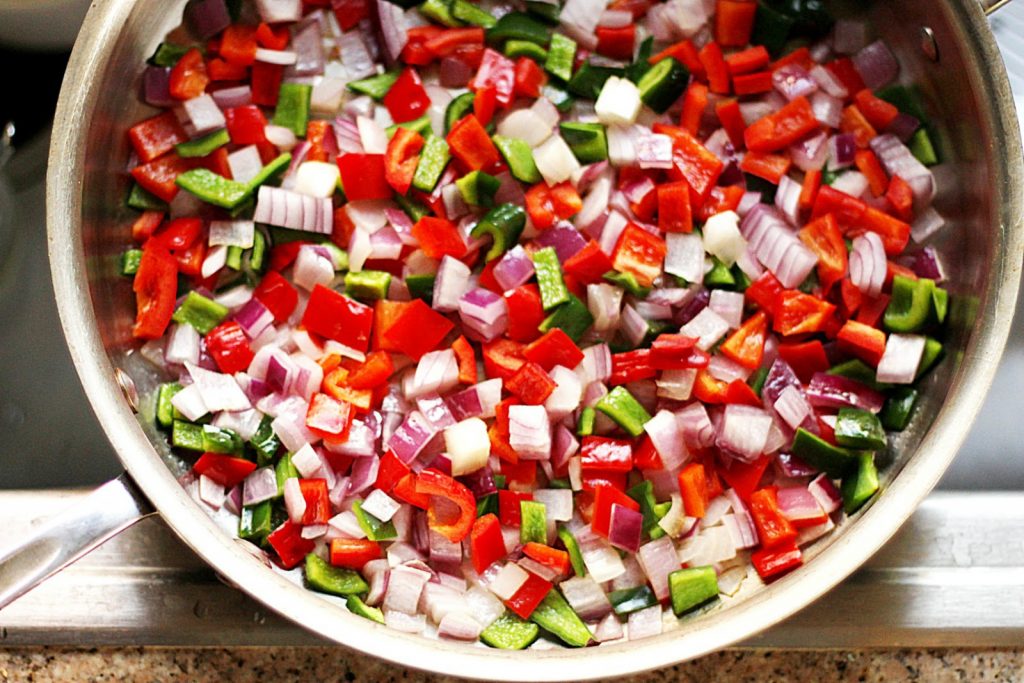
The endocrine system is like a well-constructed web of hormonal reactions that also propel a number of other actions and are influenced by factors in your health, lifestyle choices, and your daily stress levels. The endocrine system functions as the chemical messenger system in your body. Imagine your hormones needing written instructions to arrive at the place they’re supposed to. Whatever messages they receive, is ultimately how they react. Hormones like insulin, cortisol, estrogen, leptin, ghrelin, serotonin, testosterone, and many others are all affected by your diet, sleep habits, stress management abilities, weight, and health history. They also trigger responses within your body depending on the messages they’re given.
Everyone wants a healthy thyroid, sex drive, normal appetite, healthy blood sugar levels, and a great ability to manage stress. But let’s face it – that’s easier said than done. While you can’t control all the hormonal responses in your body, you can do your best to take care of it. Here are some lifestyle and dietary choices to take care of your endocrine system as much as possible.
1. Eat a Balanced Diet
First and foremost, the body knows when it’s out of balance. It will let you know in the form of fatigue, moodiness, sleep issues, unhealthy amounts of weight gain or weight loss, hair loss, focus problems, blood sugar spikes, and low libido. Of course, there are other ways it can let you know as well, but relating to your hormones, those are some of the most common issues. Diet is one of the best ways to influence a healthy balance in your lifestyle because a healthy diet will support your sleep and also support how well you handle stress.
Be sure to include a variety of whole-food, plant-based options such as leafy greens, unlimited amounts of veggies, fresh fruits (especially berries and apples both easy on the glycemic index), whole grains versus processed grains, and plant-based proteins such as beans, legumes, nuts, and seeds. These foods provide vitamins, minerals, necessary fatty acids, and protein, which are all needed for a healthy endocrine system. Also be sure to take in some healthy seaweed, superfoods, and herbs and spices all rich in antioxidants. Fresh foods will help support a healthy endocrine system, especially green vegetables and root vegetables. These foods fight off harmful fake estrogenic compounds we encounter through the environment and factory-farmed animal products. They also all contain amino acids that hormones need to function properly. They also help prevent health issues such as heart disease, diabetes, depression, and cancer.
These foods also fuel a healthy sleep cycle by providing key amounts of calcium, magnesium, amino acids, and trace minerals that assist with relaxing the body and ensuring a good night’s rest. Best of all, they contain fiber to keep you full and lower insulin levels naturally.
2. Skip the Junk
Sugar, alcohol, and even excess caffeine all wreak havoc to the endocrine system. They weaken the blood, liver, and adrenal glands and as a result, can lead to unhealthy hormone function. Sugar and excess caffeine can both cause a spike in insulin, and all processed foods are like putting tar in your body. Don’t expect it to use those foods to create healthy hormones. The body needs real, fresh food which it automatically knows how to process. Real food is used to be broken down by the body, but junk food products only confuse it and your hormones at the same time.
3. Ditch the Dairy
Dairy is a big no-no for taking care of your hormones, but not just because it comes from an animal. It’s also because dairy contains numerous natural hormones that weren’t meant to be combined with your own. Skip the dairy and go dairy-free. Remember, dairy comes from pregnant cows and we seriously doubt you want any of that in your body, right?
4. Get Your Rest, No Exceptions
Rest is absolutely essential for a healthy endocrine system. Without enough, no hormone in the body will function naturally and stress, weight gain, and even serious health issues can occur. You know the drill – seven to eight hours, no exceptions! Need some help getting there? No glass of milk needed;
5. Find the Right Exercise for YOU
Exercise is important to live a healthy life, but choosing the right exercise for you is also key to taking care of your hormones. Did you know high-intensity training (though as beneficial in many ways as it may be), can exasperate stress by raising cortisol levels in certain individuals? Try more relaxing exercises like yoga and walking if you’re prone to stress. They may seem boring, but they help lower stress, which evens out your hormones and raises feel-good chemicals, specifically the amino acid GABA, which relaxes the body, improves stress, and levels out the hormones naturally. Serotonin and dopamine are two important hormones that are influenced by diet and exercise. If a long run or kickboxing session pumps you up and lowers stress for you, then great, but if it makes you tired and more stressed, then try a better exercise for you that isn’t as intense.
Don’t Forget…
It should also be said that all animal products contain natural hormones, even meats and other products labeled added hormone-free. These foods can upset our natural hormones and aren’t optimal for balance in the body or production of your own hormones. While everyone transitions into a plant-based diet in their own way, or comes to it for different reasons, your hormones will appreciate foods from the earth, much more than hormone-filled, bacteria-filled, and acidic animal sources of protein.
Remember that the better you take care of your blood sugar, manage your stress, and aim for a balanced lifestyle and diet, the better off your hormones will function. Why? All of these things propel off of the other, so emphasizing a whole food, plant-based nutrition plan free of processed foods, getting enough rest, and finding the best exercise for you are some of the most influential things that you do have control over.
Suggested Protocol First 5 Days:
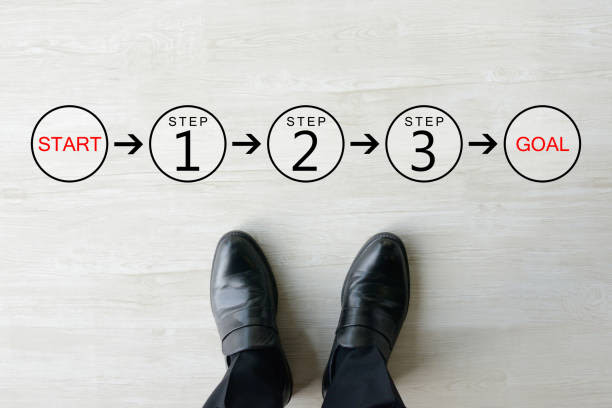
EARLY MORNING:
- Oil Pulling: Scoop 1/2 tbsp coconut oil and swish it in your mouth for 2-5 minutes. Spit and scrape your tongue with a tongue scraper or a simple spoon. Brush teeth and rinse mouth well after.
- Drink 1 tbsp of Bentonite clay in 8oz of filtered water. (This is the liquid form and can be purchased online or at our local health food store)
- Use warm water always. and stir while drinking not to settle on the bottom. Follow this with 2 more 6-8oz of water.
- Wait 20-30 minutes and eat breakfast.
- *PLEASE, SHAKE THE BENTONITE CLAY BOTTLE VIGOROUSLY BEFORE POURING IN THE CUP AS IT SETTLES ON THE BOTTOM!
BREAKFAST
- Boiled Egg, 1 oz of imported goat cheese, 1/2 avocado, a handful of grape or cherry tomatoes, 1/3 cup black olives
or…
- Rolled Oats with 1 tbsp chia seeds or flax seeds, a handful of dry fruit of choice of warm water or a nut milk. Add some toasted walnuts or another nut of choice. This is easy if you make this the night before, known as “overnight oats”.
- Supplements: Vitamin C, D3, and B complex (if you have got the last two).
- One hour after breakfast have a cup of milk thistle and dandelion tea (you can steep them
together). Enjoy this hot or cold. I add LOTS of lemons to help with the flavor. - After you drink the tea, drink two 6-8oz of warm or room temperature water to flush the toxins again.
- Wait 30-45 minutes and only if you feel hungry, eat a snack
OPTIONAL SNACK
If you didn’t have nuts for breakfast, have them as a snack along with some other healthy options below:
- Hummus with carrots or other veggies
or…
- Fruit
or…
- A handful of nuts
LUNCH (This will be your largest meal of the day)
Protein boost salad: I use a variety of greens and other raw veggies. Top your salad with the options below:
- Pre-cooked Whole Grain of your choice, 2/3 cup, topped with steamed or roasted vegetables of choice and sweet curry dressing…
or…
- Cooked Garbanzo beans, 2/3 cup, rinsed and drained well with halved grape tomatoes, thinly sliced 1/4 purple onion, a handful of chopped cilantro and sweet apple cider vinegar
- Fruit
Wait for 1h and drink a cup of St. John’s tea, followed by one 6-8 oz of:
- Warm lemon water
or…
- Apple cider vinegar drink or shot.
- 1 tbs vinegar in 8oz of water
or…
- 1 tbs vinegar, mixed with a little honey
- Drink this “shot” and follow immediately with 8oz of water
- After 30-45 minutes have a snack only if you are hungry
SNACK
- Cilantro Pesto, 1-2 tbs.
- Serve with celery or carrot sticks. I always like a squeeze of lemon to finish my pesto with.
DINNER (Your lightest meal of the day)
Vegetable soup. Using 1 -2 cups of the pre-made stock, add filtered water if it is concentrated. as well as any chopped vegetables you like. Bring to boil and cook for 20 minutes. Vegetables need to be overcooked, almost mushy for easy digestion. Have as many portions as you want. You can add chopped parsley, dill, or cilantro. You can mash 1/4 avocado to make the soup creamier. You can sprinkle
chia or flax seeds or squeeze some lemon juice. You can add Cayenne pepper for an extra bite or chopped jalapeño pepper.
Customize this soup each day to the flavors you are in the mood for:
- Italian
- Southwestern
- Asian
Have fun with it.
BEFORE BED
- After dinner wait at least 1 hour
- Enjoy mint tea before bed to ease digestion and help with restful sleep
Wellness 2022: Detox, Part II, Day 1

Detox, Part II
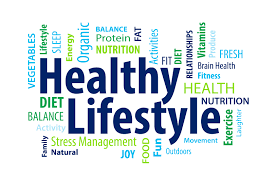
This week we are taking our plant-based diet, and adding a few herbs and teas that help to support our detoxifying organs. We also want to introduce you to the importance of a healthy lifestyle on our endocrine system…but we will discuss more about that in the days to come.
TODAY, we hope you begin to follow some of the protocol that we put out last week. Again you can follow it completely, or as little as you choose. Let’s look a bit further into the term “Detox”.
A full body detox, or cleanse, is a plan that people follow in an effort to eliminate toxins from the body.
Toxins, such as poisons or pollutants, are substances that negatively affect health. The body can already eliminate these substances on its own through the liver, kidneys, digestive system, and skin.
Proponents of detoxes claim that a detox can help with this process. There is no single definition of what a full body detox involves, but it may require a person to:
- follow a specific diet
- fast
- drink more water or juices
- use supplements
- use colonic irrigation, enemas, or laxatives
- use a sauna
- reduce exposure to toxins in their environment
Are they necessary?
While some people believe that full body detoxes provide health benefits, they are not necessary for most people. The body already has its own highly efficient detoxification system to eliminate toxins from the body.
Sometimes, people have medical conditions that require help with detoxification. For example, people with heavy metal poisoning may undergo chelation therapy. This is a procedure that removes heavy metals from the body.
However, people who are healthy typically do not require additional help with detoxification.Potential benefits
While detoxes are not medically necessary for most people, under certain circumstances, they may offer some health benefits, such as:
- Weight loss: A 2017 review notes that detoxification diets can result in weight loss. However, the researchers note that this is likely due to the severe calorie restriction of some diets.
- Fruits and vegetables: Many detox diets may involve consuming fruits and vegetables. According to the Office of Disease Prevention and Health Promotion, roughly three-quarters of people in the United States do not consume enough fruit and vegetables.
- Hydration: Many full-body detoxes also promote water consumption. Water is vital for health and helps the body remove waste through sweating, urination, and bowel movements.
- Antioxidants: According to a 2014 review, some studies have found that certain detox diets can aid liver function and that certain foods can increase the antioxidant glutathione. Glutathione can help remove toxins, such as heavy metals, from the body. However, the researchers highlight that many of these studies had design flaws, involved a small number of participants, or were animal studies.
Potential risks
According to the National Center for Complementary and Integrative Health, some detoxes pose health risks by encouraging people to:
- restrict food intake, leading to a lack of necessary nutrients
- drink large quantities of juices or teas, which may lead to a dangerous electrolyte imbalance
- drink juices that contain large amounts of oxalates, which may raise the risk for kidney problems
- use detox products that contain laxatives, which may result in severe diarrhea and dehydration
- try diet plans that exacerbate underlying conditions, such as diabetes
Both the Food and Drug Administration (FDA) and the Federal Trade Commission have taken action against companies selling detox products, as some contain harmful or illegal ingredients.
People should always discuss supplements, detox products, and new diets with a doctor or dietitian before trying them.How to try a full body detox safely
If a person wishes to try their own version of a full body detox in order to feel healthier, there is a safer way to do so. In many cases, making simple changes to diet or lifestyle can improve general health.
Here are some ideas for how to support the body’s detoxification system.
Stop smoking or drinking
Tobacco smoke and alcohol both place strain on the body in various ways. Alcohol in particular affects the liver, which is the body’s main detoxification organ.
If a person smokes or drinks regularly, they can begin a detox by reducing these habits or stopping entirely.
Stay hydrated
Drinking enough water is important for general health and also for detoxification. How much water a person needs depends on their level of physical activity and age, among other factors.
Begin eating a nutrient-dense diet
Adequate nutrition allows the body’s detoxification system to work effectively. People should avoid refined carbohydrates, added sugars, and processed foods and try to include more:
- foods high in antioxidants, such as berries and nuts
- dark leafy greens, such as kale, spinach, and chard
- complex carbohydrates, such as sweet potatoes or quinoa
- fresh herbs and spices, such as ginger, turmeric, or cilantro
Oily fish are another source of beneficial nutrients. However, it is important to note that some oily fish, such as tuna, can contain mercury. The FDA advise eating 2–3 servings of low-mercury fish or seafood per week.
Learn more about eating a balanced diet here.
Get enough sleep
Sleep allows the brain to remove toxic waste products that accumulate throughout the day. This makes adequate sleep an essential part of detoxification.
Improve indoor air quality
While it is not always possible for individuals to control pollution exposure outdoors, there are things people can do to reduce exposure indoors, such as:
- asking household members to smoke outdoors
- avoiding products that contain high amounts of volatile organic compounds (VOCs), such as aerosols and air fresheners
- keeping rooms well ventilated when someone is using solvents, household paints, and other DIY products
- choosing carpets, couches, and mattresses that do not emit VOCs
- addressing issues such as damp and mold
- dusting regularly
- using an air purifier with a HEPA filter
When to contact a doctor
Before a person attempts a full body detox or makes significant lifestyle changes, it is advisable for them to consult a healthcare professional.
It is also best to consult a doctor if a person is having ongoing symptoms that make them feel the need for a detox. These could be a sign of an underlying condition, which may require treatment.
If a person decides to try a full body detox and begins to feel unwell or experiences symptoms such as diarrhea, fatigue, dizziness, or vomiting, they should stop the detox and contact a doctor.


